As an Amazon Associate I earn from qualifying purchases.
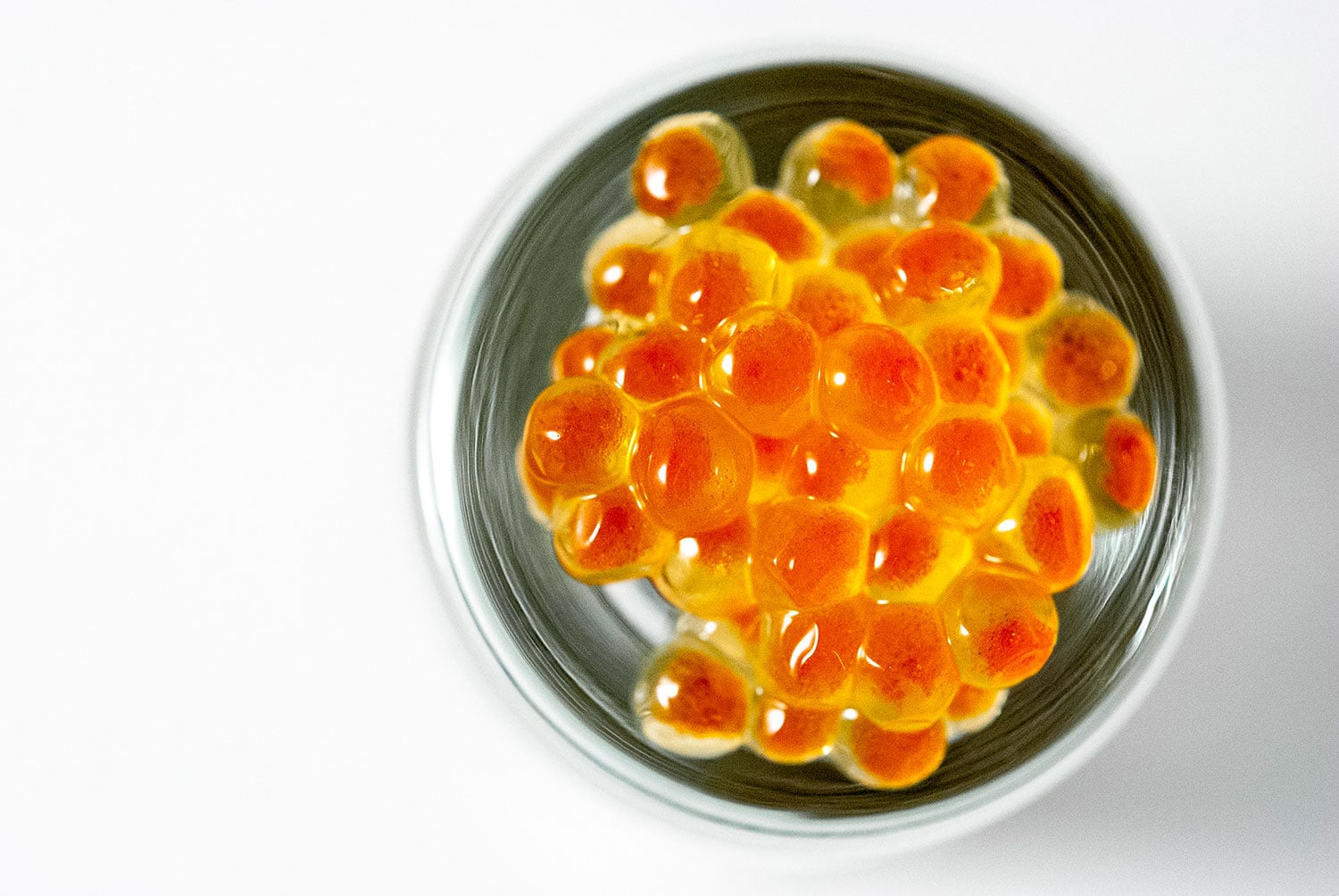
Caviar has always had a hold on me. It is a mysterious ingredient, almost otherworldy; the individual eggs look like jewels from an alien planet. Caviar tastes briny and vaguely floral, and the textural surprise of the pop in your mouth has led more than one writer to liken it to Pop Rocks for adults.
I’ve eaten all sorts of caviar, from spendy Osetra sturgeon caviar to our own California white sturgeon eggs, to Paddlefish roe to salmon roe ikura, to the wonderful little eggs from flying fish (tobiko), capelin and whitefish, which is a golden yellow. I’ve also eaten caviar from trout and char.
Steelhead roe is a particular favorite, as is king salmon roe.
I’d read about a general method of making caviar in a book called The Philosopher Fish, which involves gently removing the eggs from the skein — the membrane holding them together — rinsing them, salting them and drying them. It seemed pretty easy, which alarmed me: How could something so mysterious be so easy to create? It didn’t seem fair.
I delved into some more research, and it is indeed that easy. The art comes in the details: How do you get the eggs out of the skein? How much salt? How long to brine or rub the eggs? What temperature do you store them at?
So I use an amalgam of the methods I’d read about. I brine the salmon roe for a half hour in the fridge. Then I run the skein under hot tap water, which shrinks the membrane and lets the eggs drop into a colander. I then return the eggs to the brine for another 30 minutes. I rinse them off and let them drain in the colander for 15 minutes. Then I package them into a clean glass jar in the fridge. Done!
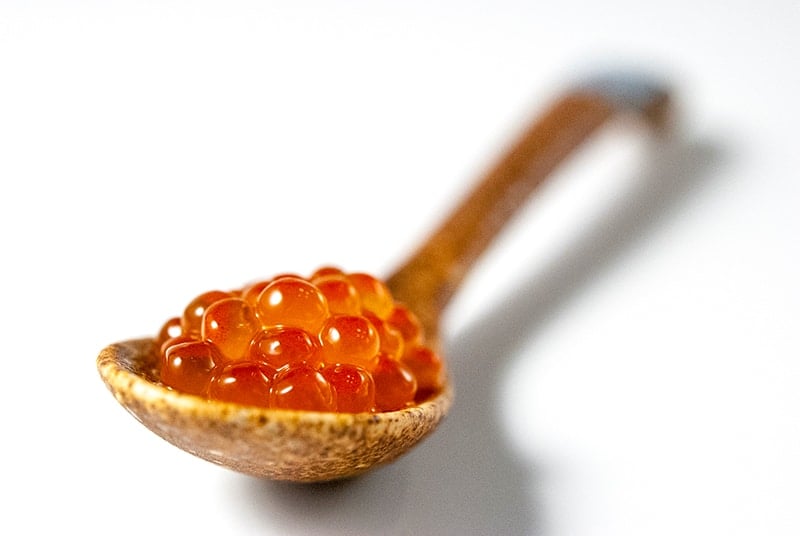
And there is an easier way: Run them over a cooling rack, membrane side up. Either method results in some egg loss, and the hot water trick can sometimes cook the eggs, which is no bueno.
Aren’t they the coolest things ever? I have a hard time not taking them out of the fridge just to look at them. homemade caviar keeps for 2 weeks in the fridge, but I think it gets fishy after about a week.
I prefer my caviar straight, served in a special spoon, so you can linger over the qualities of this caviar versus that one; this is what the Russians do when they serve the three classic sturgeon caviars: Beluga, Sevruga and Osetra. In case anyone cares, I am particularly fond of Osetra, which is pretty close to our caviar made from California white sturgeon.
Remove from your mind the notion that the only good caviar comes from sturgeon.
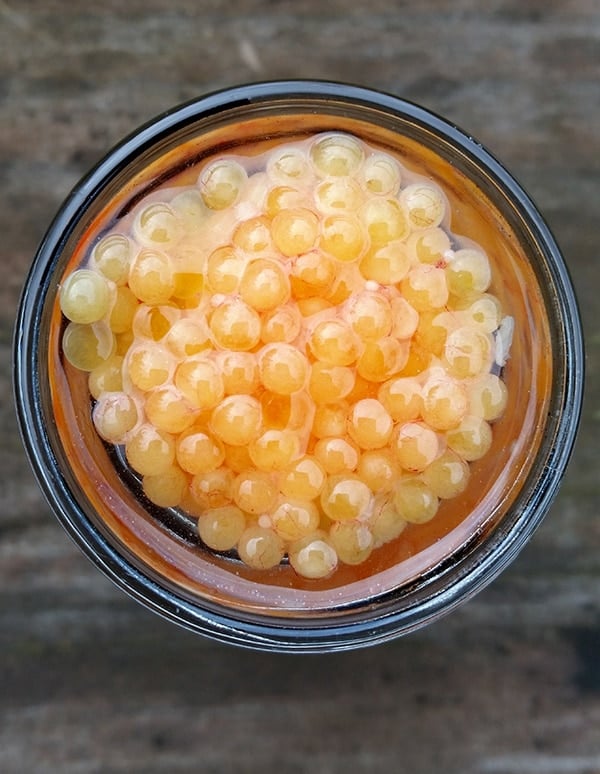
The tobiko and masago you see in sushi restaurants is caviar from the flying fish and the capelin, a kind of herring. It really is like pop rocks. Whitefish caviar is even better, and is a beautiful canary color. Lumpfish is like a larger sturgeon caviar, but trout and salmon caviar is its own thing: large, luxurious, and slightly fatty — I saw thousands of minute fat droplets floating on the top of the brine when I made it.
When combined with a larger dish, caviar can become an accent that makes a good dish great.
I make a pasta dish with flaked salmon, mixed with toasted pine nuts, parsley, shallots, olive oil, Meyer lemon juice — and a spoonful of salmon roe caviar. The color and pop really makes the dish.
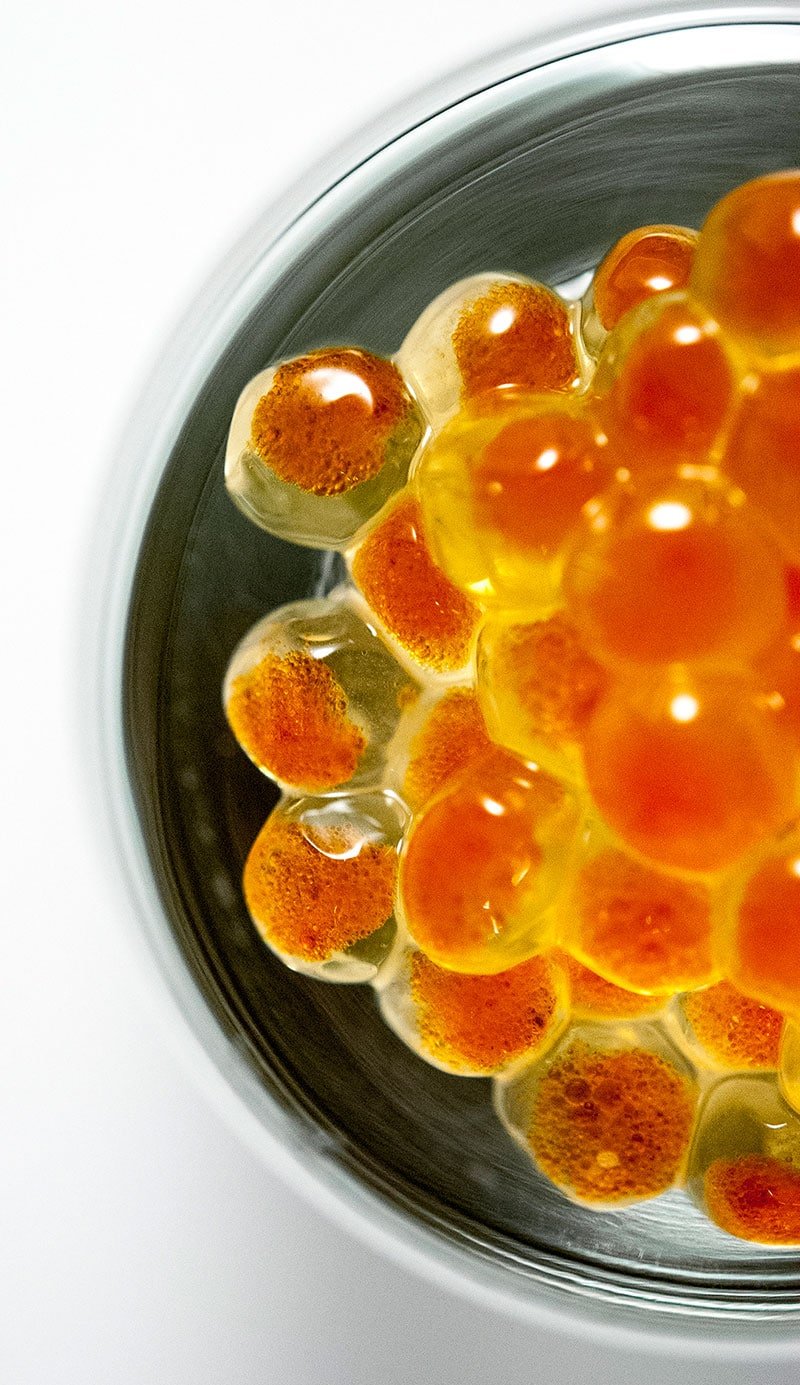
Homemade caviar also works well as a garnish for a simple Japanese dish of salmon or trout wrapped in buttered foil with some matsutake (or other) mushrooms, sake and lemon slices, then baked it for 20 minutes. Damn good.
Will this method work for other fish roes? Yep. I imagine the salting times and care you will need to dislodge the eggs will change, but the basic technique shouldn’t change.
How to Make Caviar
Ingredients
- 1 full skein of steelhead, trout or salmon roe
- 1/2 cup kosher salt
Instructions
- Mix the salt and 1 quart ice-cold water until the salt is all dissolved.
- Make sure the roe skeins are split, so you have an opening that the eggs can come out. Set up a cooling rack or something else with a wide mesh (chicken wire works, too) over a bowl. Take a roe skein and, with the membrane facing up work the eggs out through the rack. Perfectly ripe eggs will come off easily, unripe ones will require some force. Either way, you will pop some eggs in the process.
- ALTERNATE METHOD: Get the faucet running with warm water roughly 105°F to 115°F, or heat cool tap water to this temperature -- some people fear that hot tap water can add harsh minerals to their food. Either way works. Fill a metal or glass bowl with the warm water. Dunk a few skeins of roe at a time in the warm water. Gently massage the eggs out of the skeins with your fingers under the surface of the warm water. They will float away and sink. Discard the skeins.
- Have a fine-meshed sieve ready. Pour the strained eggs into the strainer to rinse them well with cold water. Pick out clumps or stray bits of membrane.
- Dunk the eggs in the brine for 5 minutes. Taste them and if they are salty enough for you, drain them again. You can brine for up to 30 minutes, but they will be very salty. My preferred brine time is 10 minutes. Spoon carefully into a clean glass jar and refrigerate for up to 2 weeks, but try to eat them within a week or they will start to get fishy.
Notes
Nutrition information is automatically calculated, so should only be used as an approximation.


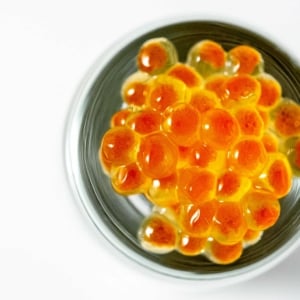

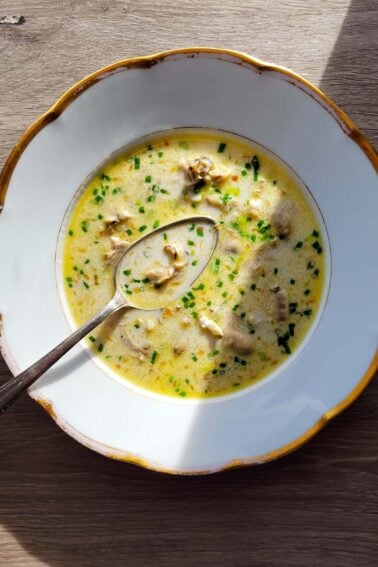


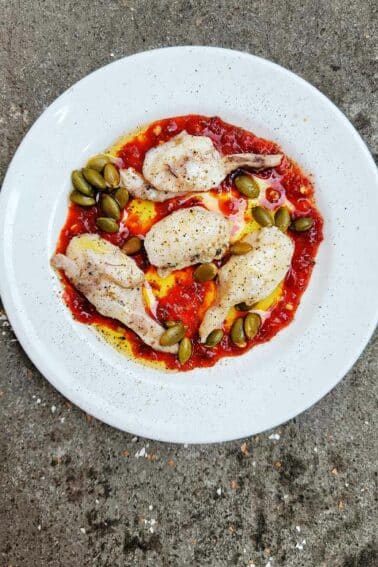
I thought you’d enjoy the post I just put up. I’m having fun playing with fish eggs this winter 🙂
https://borninthewrongcentury.com/2012/02/21/how-to-use-fish-eggs/
Finally! This is the first place I found real and useful information about caviar. I have never before tried making my own ‘cos I always buy caviar online from the same shop. I realized beluga caviar tasted best to me, so I stuck to it. I will have to try making my own once, though. It sounds like a special, new experience! Thanks for this post!
When in season, I used to buy sacks of salmon roe and I’d gently wash them inside a bowl of Sake and then move them to a tupperware and cure them with soy sauce. Washing with sake makes the eggs slip out of the skin and the eggs will also absorb the Sake as well. Other types of alcohol should work, but Sake compliments seafood very nicely.
Hi Hank, I wanted to post a reply to Yeoman’s post even though its 2 years later. Most caviar is harvested from salt water fish. Sturgeon and salmon and some breeds of trout are anadromous. This means that they spend part or most of their life in salt water and migrate to fresh water to spawn. The Caspian Sea where the world renowned caviar comes from is salty. Your steelhead is a breed of rainbow trout that spends most of its life in salt water and spawns once a year in fresh water, Flying fish, herring are salt water fish. White fish can be both. There are some exceptions such as those salmon and sturgeon either planted or landlocked by dams in rivers and lakes. Paddlefish are mostly fresh water. With parents born in Ukraine I have been eating caviar for most of my life(66). To me commercial freshwater caviar is made way to salty. Why I don’t know. Perhaps because salt as a preservative can kill those parasites mentioned by another poster. Good saltwater caviar is only lightly salted (thus its very short shelf life) which allows that fresh, wonderful saltwater raised flavor to shine thru. Sorry if I was long winded. Taras
Caviar is a delicate and perishable substance. Therefore, it can only retain its ideal quality in cold storage, ideally at –2 C, or 28 F. The high oil content of caviar prevents it from freezing at these levels.
Only realizing now that I made caviar last time i went fishing (https://ow.ly/3wH6P) – I just salted the trout roe for about an 45 minutes/1 hour. Then I took some of it and blended it with a little oil to make a sort of mayo and garnished with the rest. soo tasty. Great pictures again!
I have a 2-1/2 bag of frozen salmon eggs from my brother’s recent trip to Alaska.
Can I make them into caviar, or are they only good as bait?
Thank you. Penny, TX.
Hi, I caught some nice brook trout that were full of eggs, and decided to try your recipe. ive never had caviar before so i wanted to try it, very interesting, rich and buttery, thanks for the recipe
Dinara: I’ve never worked with paddlefish roe, but there is no reason I see why it should be much different from steelhead roe. If I had some, I’d do exactly the same thing as with the steelhead. Give it a go, and let us know how it turns out!
Can anybody share their experiences converting paddle fish eggs into caviar, please?
i use catfish it is good. emerill used shad i believe.a combonation of cavier and fried roe is awesome.make a portabella sauce over a grilled fillet ohhhhh so good
This article was HUGELY helpful to me. I love trout caviar but have never actually prepared it myself until now. The utilization of these eggs is paramount to an angler. Now I just need to tie more flies!
Dockside Fish Market in Grand Marais, MN make caviar from Lake Superior herring roe. Delicious! Thanks for sharing the process. I love your blog. Naughty mushroom soup here I come!
i was told my japanese people that i worked with that since the fish was in fresh water you shouldn’t eat it raw for fear of parasites. i KNOW this is true of the flesh. and it seems it could hold true of the roe as well.
when i made ikura from salmon, i wasted a lot of eggs – but i had a lot to start with!! i just rubbed the skein in a stack of paper towels. some eggs break but the rest break loose from the skein.
then cure is shoyu (soy sauce) and sake. the sake will make sure to kill any bugs. i left them brine for 12-24 hours before eating. so sweet and crisp!
By way of cultural exchange, Here’s my recipe for venison (or beef) pasties. Just started hunting for the first time this year and shot my first deer this past November!
I’ve done this! I’ve made caviar with the brook trout egg pouch with the trout that we caught!!! It was amazing. Can’t wait for the season to open again.
I am from Azerbaijan, so I naturally grew up with caviar. Back home we ate it spread thinly on a slice of buttered bread – cream cheese will work too. Butter back in the Old country was eaten cold and sliced, never room temp and melted.
Bodega: Minimum time? Uh, like an hour… Being so small, caviar doesn’t need to age much to get its cure on. I’d start eating them now and try to have them all eaten within two weeks.
I have not found a way to keep them more than three weeks without them getting really fishy. Maybe steam canning?
Hank – I made a batch this evening using Russian River steelhead we caught two days ago. Is there a minimum time you would want the eggs to sit in the fridge before eating? Can’t wait to try them!!
Wow! I never thought about making this, we get loads of fish in everyday, maybe I´ll tell my fishmonger to bring them whole (not cleaned), maybe he has been keeping a huge stash of eggs from me!
Happy New Year Hank!
Yeoman: No idea why caviar is mostly a freshwater thing. My only guess is that the caviar-making tradition originated far from the sea. But that’s just a guess.
Let me know how caviar from snapper and kingfish tastes! I’ve never done it with saltwater fish, although I’ve fried up flounder, mackerel, herring and sardine roe and it was good.